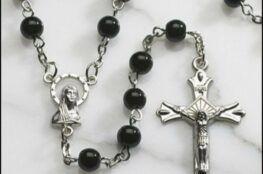Less is being made of the new Netflix murder-drama spectacle The Keepers than I had anticipated. After the rousing success of Making a Murderer and, prior to that, the podcast Serial, I had assumed that The Keepers would become the talk around the water cooler at thousands of offices across the country. Apparently not. That is not to say that there hasn’t been some discussion of the miniseries’ contents. The graphic depictions of sexual abuse on teenage girls at a Baltimore Catholic school in the 1960s are as difficult to overlook as they are to stomach. Personally, following the grotesque revelations made in episodes 2 and 3, I had to hit pause on the show lest I find myself overtaken by irrational anticlericalism. Yes, I am well aware that the abuse accounts contained in the series are a gross exception, not the general rule, but acknowledging that fact does not relieve the burning sense of betrayal all Catholics should feel when presented with evidence of priests who violate all standards of decency and care in pursuit of their vile desires.
Like any expose of the Catholic Church, there are points where The Keepers tries to exaggerate the extent of secrecy, malfeasance, and general vice within the Church. There are, naturally, stories of people losing (or, rather, abandoning) their faith because of the abuse that went on, and the “hero” of the story—Sister Catherine Cesnik, who was murdered because she was apparently prepared to expose the abuse scandal in 1969—was a “hip” nun who had been granted permission to live outside of the cloister sans habit prior to her death. (It is hard to not shake the feeling that if she had remained living with her order rather than a mid-grade apartment complex, she might still be alive.)
Beyond the tales of abuse, corruption, and cover-ups galore, The Keepers provides an indirect, but interesting, snapshot of Catholic life during the reforms following the Second Vatican Council. While the image of Catholicism as it appeared in decades prior is still present, there is a noticeable shift in attitude among some of those interviewed about what it meant to be Catholic. For instance, one interviewee, an ex-Jesuit priest, had at one point proposed marriage to Sister Catherine just prior to his ordination and before she was to take her final vows. He was unashamed in his recollection that he had grown to love her; and though she apparently talked him into fulfilling his vocation, it didn’t “take” as they say. Like so many priests and religious after Vatican II and the laicization of the Church, he opted to abandon his calling, perhaps no longer seeing any “value” to it.
As the series proceeds, it’s hard not to notice the shift in aesthetics and tone that are presented over the decades. Well-adorned temples that had been standing for more than a century give way to barns decked out with modernist statuary surrounding priests vested in horse blankets presiding over an emaciated rite. One of the abuse victims, up until her grueling trial of attempting to get the Diocese of Baltimore to take action against the priest who repeatedly raped her, boasted of her involvement in the Church, complete with serving as an “Extraordinary Minister” of the Eucharist. Now, however, the unconsecrated fingers that once held the Body of Christ have been washed of all dealings with the Catholic Church. There was, in her mind, nothing left for the Church to give in exchange for everything some of its priests had taken from her decades ago.
In addition to the abuse accounts themselves, nothing is more chilling in the series than the descriptions of how these perverted clerics used the confessional to their advantage. Without compunction, these priests excommunicated themselves by violating the sacred seal of Confession in order to manipulate their victims into submitting to their carnal desires. While the abuses detailed in The Keepers are undoubtedly excessive, they do call to mind the more general problem of how clerics can use confession to inflict psychic and emotional harm on others, all in the name of being their “spiritual fathers.” Rather than dispensing God’s infinite mercy, they seek to aggrandize themselves by micro-managing the souls entrusted to their care, often leading them not to virtue but to emotional confusion and spiritual despair.
It is difficult for me to recommend The Keepers to everyone. Those who have suffered some form of abuse, regardless of the source, will find the graphic depictions contained in the miniseries difficult to stomach. Those already inclined to blame the Catholic Church for so many of the evils in this world will probably find the series to be little more than a confirmation of all of their prejudices. Even faithful Catholics might be so put off by what unfolds during the documentary that they may begin to question their place in the Church generally. Heaven forbid. However, despite its flaws and occasional biases, The Keepers should remind us that the Church is both a divine and very human institution. It is not, by virtue of its divine establishment, immune from satanic machinations and the corroding power of sin. Its history is one riddled with crises, both moral and doctrinal. While it may be difficult to acknowledge that, particularly in a day and age when “religion” is believed to be either outdated or representative of little more than easygoing sentimentality for the “spiritual,” there’s no good reason to look away from that reality, either.



